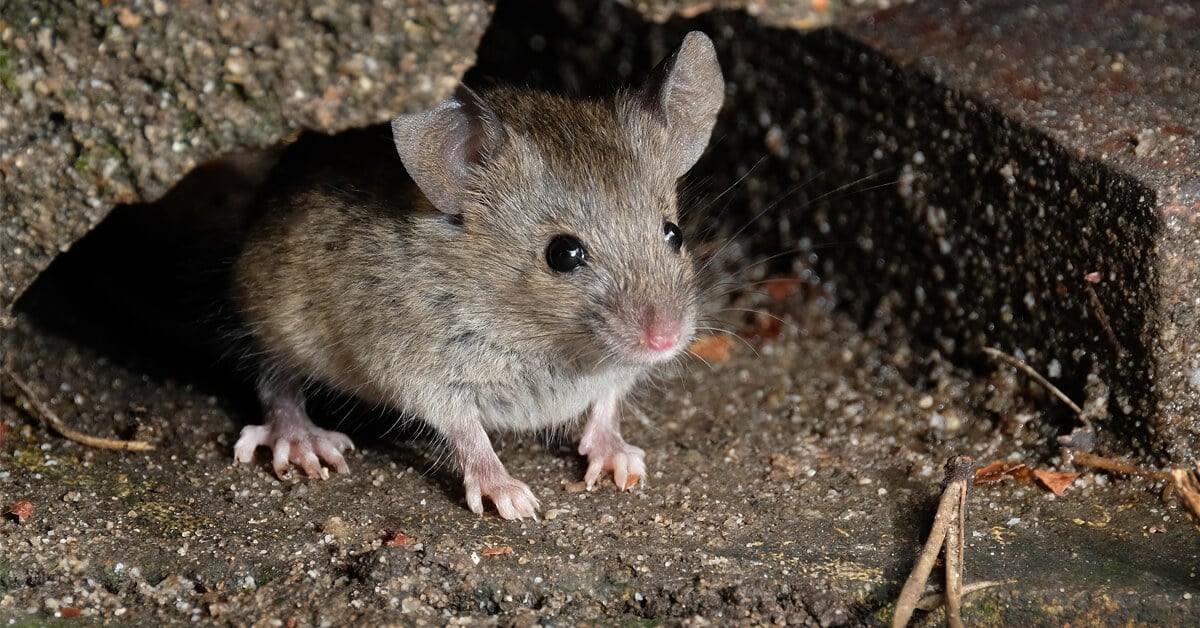A SINGLE MOUSE IN THE HOUSE WON’T BE LONELY FOR LONG!

Rabbits may have a reputation for being prolific breeders, but mice have them beat. The fastest-breeding mammal is actually the opossum which has a gestation period of only 12 days. Mice aren’t far behind, giving birth just 20 days after conception. But it’s not the length of their gestation periods that make the house mouse such a dangerous pest problem; it’s the incredibly short time it takes these small mammals to reach sexual maturity and begin breeding. Opossums don’t reach sexual maturity until a year after their birth. Rabbits need 6 months to reach breeding age. Mice, however, can begin a family as quickly as 25 days after birth, although 6 to 10 weeks is more typical.
Female mice can breed again within 12 hours of giving birth and breed year round. They are capable of producing a new litter every 3 to 4 weeks and can have as many as 15 litters per year, although 5 to 10 is the norm. With an average litter size of 6 to 12 pups, mice populations can grow exponentially in a very short time. Even if you’re conservative in your calculations, a single pregnant mouse that takes refuge in your home in the fall can lead to a major mouse infestation of more than 500 mice by spring! Some mice, notably the common house mouse, live in polygamous groups comprised of a single male, several breeding females and their offspring. Multiple litters can quickly cause mice populations to grow exponentially.
The two most common mouse species in the U.S. are the house mouse and the white-footed deer mouse. The most common mouse species on Earth is the house mouse, which originated in Asia, quickly spreading around the world in trading caravans and sailing ships. One of the world’s most problematic and economically devastating pests, house mice eat and contaminate food supplies, damage property and destroy agricultural crops, costing the U.S. millions of dollars every year. Poor competitors in the natural world, house mice live primarily in and around homes, commercial buildings and farms.
An American native, the white-footed deer mouse makes its home outdoors, living independently in burrows built in grassy fields and woodlands. Under normal circumstances, white-footed deer mice are occasional autumn home invaders. In areas where new construction has destroyed their natural habitat, these mice frequently take refuge in homes, garages and attics.
The house mouse is about 2 inches long from nose to tail with a 3-inch long hairless tail, small eyes and large, nearly hairless ears. The white-footed deer mouse is slightly larger, about 3 inches long, with big, protruding eyes and over-sized ears. Its bi-colored tail is covered with fine hairs and is lighter on the underside. Both rodents are short-haired. House mice are usually gray with a lighter belly but can range in color from light brown to black. Distinguished by their white feet, white-footed deer mice are brown with a white belly.
Mice compensate for their poor vision with hyper-sensitive whiskers and acute hearing. They use a combination of squeaks and pheromones secreted in their urine to communicate with each other. Their large ears allow mice to detect sounds in the ultra-sonic range where much of their short-distance communication takes place. Loud, piercing squeaks are used for long-distance warnings.
Omnivores, mice feed on cereal grains, seeds, fruits, berries and small insects. However, these rodents are opportunistic feeders and will eat anything humans eat. When mice forage indoors, they jump onto counters to feed on food scraps and climb into cupboards where they gnaw open food boxes to feed on the contents. Constant nibblers, house mice feed on several different foods during their nightly forages, contaminating food and fouling food preparation surfaces and food storage areas with their feces and urine.
Mice pose a serious health threat to humans. As these small rodents scurry about, they constantly dribble urine and fecal pellets, spreading dangerous diseases and exposing humans to harmful parasites. The house mouse is a primary transmitter of salmonella, a major cause of food poisoning. Mice also carry fleas, mites, lice and Lyme disease-transmitting ticks. Accumulations of rodent hair can provoke allergy and asthma attacks. Invading mice expose residents to serious diseases, including leptospirosis and lymphocytic choriomeningitis which can cause birth defects if contracted during pregnancy. The white-footed deer mouse is a known carrier of potentially fatal Hantavirus.
Nocturnal creatures, mice are secretive and rarely seen when they invade; they do leave behind copious evidence of their nightly foraging in the form of fecal droppings. Mouse droppings look like black grains of rice; a single mouse can end up dropping as many as 70 fecal pellets a day. When mice are present, paper that has been shredded for nest building and gnaw marks on woodwork or cabinets may also be evident. A mouse in the house is nothing to ignore; these small rodents place homeowners and their families at serious risk. When homeowners discover evidence of invading mice, they should contact a licensed and industry certified pest control company, like Viking Pest Control, for fast, safe pest removal.
For more information on the rodent control services available in New Jersey, Pennsylvania, Delaware and the Eastern Shore of Maryland, contact the professionals at Viking Pest Control today and schedule your first service.
Call Viking at 800-618-2847 to learn more about mice pest control and extermination services, or get a fast, free quote online today!











